20 Images of Everyday Japan
Here are 20 images of everyday life in Japan from the hundreds that I took on my recent business trip.
When traveling for business the focus is usually on navigation and logistics, business culture and etiquette, and the projects or prospects for which we’re preparing, but one of the joys of travel is learning about history and culture.
These images evoke memories of things I’ve learned or inspire questions which encourage me to learn more. The photo quality is low, being taken on the run with an old iPhone, but they evoke the moment I captured them nonetheless. Please enjoy!
#1 GINZA SUNRISE
Dawn broke just after 5:00 am when we first arrived in mid April. By mid June sunrise will be at 4:25 am, quite early for a city that starts late and works late! Some offices open at 9:00 am, but things really don’t get going until after 10:00 am. Most offices are still buzzing at 7:00 pm, and it is not unusual for managers to be hard at work later than that.
#2 JAPANESE BUSINESSMAN
According to Yasutaka Sai there are eight core values of the Japanese businessman: 1) diligence, work ethic or persistence, 2) group orientation, a sense of belonging and participation, spirit of harmony in interpersonal relations 3) aesthetics and perfectionism, 4) curiosity and emphasis on innovation, 5) respect for form and practicality, 6) a mind for competition and an outlook for rewards, 7) the value of silence as eloquence, 8) perception of time
#3 TOKYO METRO AND TOEI SUBWAY
With 274 stations and 13 lines, Tokyo Metro / Toei Subway combined service over 8 million passengers per day. Clean, quiet, fast and efficient — we traveled quite easily in the world’s most populous metropolitan center. Over 35 million people live here versus 37.3 million in the entire state of California.
#4 JAPAN RAILWAY GROUP
I made a day trip to Chiba for meetings and we used the railroad. JR Group is comprised of seven separate companies moving both people and freight. Rolling stock comprises everything from regular trains to the Shinkansen — The Bullet Train system. Staff bow to customers when the trains enter and leave the station, and the conductors and vendors on board do the same at each car as they move through the moving trains to check tickets or sell food and drink.
#5 BESOBORO
Baseball has been played in Japan for over 130 years. There are two leagues — Pacific and Central — that make up Nippon Professional Baseball. Players and managers are mostly Japanese, however there are some foreigners playing professional ball in Japan also.
#6 JAPANESE MANHOLE COVER
If you would like to be seriously impressed, do a Google image search for “Japanese manhole covers” or check out this article by Kuriositas. These are some of the most beautiful pieces of iron on the planet, and each municipal area has a distinctive look, emboldened by the fact that they compete with each other on designs. These functional parts of everyday life seem to be inspired by Japanese textile design and remind me of elaborate versions of traditional family crests, or mon, from the feudal era.
#7 FOOD GIFTS
Japan is a gift giving culture, and the most popular gift is one of food — rice crackers, cakes, tea, snacks, fruit, chocolate, wine, even olive oil. The basement of every department store has food hall which is partly wet market, partly deli and mostly the most amazing packaged gift food center in the world. Stacks of colorfully wrapped boxes are topped with accurate plastic and resin replicas. Busy workers can find the same thing in train stations, and every shop seems to have some sort of nod to the need to not ever show up to an event empty handed. Manju is a traditional fresh soft mochi rice cake filled with sweetened red bean paste, and this set of ten cute little animal-face manju sells for ¥2,800, about $35.00.
#8 MANGA (KOMIKKU)
I don’t know too much about manga, except it is very popular worldwide and in 2009 it was a $5.5 billion business in Japan alone. Manga is usually serialized in large manga magazines are read by people of all ages.
#9 LITTLE DOGS
There are over 13 million pet dogs in Japan, and during the Olive Japan event in Futako Tamagawa we saw a lot of black pugs and long haired dachshunds; Boston terriers and chihuahuas are also popular. Childless couples (a growing phenomenon here) are given to doting on dogs rather than kids, including dressing them, painting their nails and walking them in special dog strollers.
#10 TOTO TOILETS
Much has been written about the Toto Washlet Toilet. Once exclusively a country of squat style toilets (which can still be found in public and private places throughout Japan) increasingly the western-style flush toilet is the norm. I use the phrase “western-style” loosely because Toto makes a uniquely Japanese item. Features vary, but include pre-warmed seat to a constant temperature, automatic sensors that raise the lid upon approach and flush upon completion, sound options such as music or water running, bidet front or back (the famous oscillating comfort wash feature), and more.
#11 JAPANESE EDUCATION
We saw children in uniform for school 7 days per week, either for regular school or cram school. Everyone was quiet on the trains, the children reading or dozing. Not knowing much about the school system, I found this blog about a Chinese mother’s experience with Kindergarten in Kyoto, a fascinating read. It’s just one experience, but interesting nonetheless.
#12 COFFEE CULTURE
When I visited Japan in 1988 I was astonished at the quality and sophistication of coffee. The local shop near the Capitol Tokyu Hotel had options for beans, roast, grind and brewing style! Excellent coffee was also available in cans in vending machines on the street or in train stations, if you were in a rush. Coffee has been popular in Japan since the late 19th century, and today you can find Tully’s, Illy, Starbucks, Doutor and many other coffee shops here.
#13 KIMONO WEARING
In March 2011 I saw a few kimono, but in April 2012 the number of women in traditional attire seemed much higher — grocery shopping, walking down the street — everywhere. At first I wondered it if was a reaction to the earthquake and tsunami last year — a desire to return to the comfort of the familiar during stressful times, however Japanese friends tell me that more women wear kimono when the weather is fine in the Spring.
#14 NEW & OLD
I snapped this quick image because of the kimono, but even more interesting is the study in contrast between new and old. The young man looking at his phone is as ubiquitous in Japan as it is here at home; young people, head down and engaged with their devices. The iPhone has lost a lot of market share in Japan, from 80% in 2010 down to 18.7% today. There are a lot of choices to take iPhone’s place, especially Android.
#15 GREEN TEA
I love Japanese green tea: genmaicha, sencha, matcha, all of it. Green tea is served hot or cold and has become available as a flavoring in many everyday items, including KitKats. During Cherry Blossom season they even have Green Tea/Cherry Blossom flavor!
#16 CUTE LITTLE ANIMALS
Cute little animals are everywhere, in confection, as accessories, on signage, and even the on-board video greeting passengers on ANA, All Nippon Airline. Here is a tangle of little silk animals hanging off the steering column in a hired car in Takamatsu. Our driver was a conservative looking gentleman in his late 50s, not one you’d expect to have colorful little silk animals in his car, would you? A friend asked me about the prevalence of so many anthropomorphized animals and I mused that it might be related to the deep-seated Shinto culture here — everything has a kami, a spirit. What do you think?
#17 MORE CUTE LITTLE ANIMALS
Here is the sign on the elevator on the Olive Ferry from Takamatsu to Shodoshima. Watch out! Be careful to not catch your fingers or clothing in the elevator door! It pinches. Like a crab.
#18 WABI-SABI
I paraphrase from Wikipedia here: wabi-sabi represents a comprehensive Japanese aesthetic centered on the acceptance of transience; sometimes described as an aesthetic of beauty that is imperfect, impermanent, and incomplete. We jumped out of our van to take a few photos of terraced rice paddies in the highlands of Shodoshima, and this road sign caught my eye. The last kanji is so strong and stable looking, and the rust from the sea air around it so beautiful.
#19 SHODOSHIMA 88
We took the ferry to Shodoshima to see olive production, but left with much more. This small island, technically part of Shikoku, is home to 88 shrines and temples, and there is a special pilgrimage you can make with the help of the Shodoshima 88 Association. I love this image of the pine tree (matsu) and rocky coastline with the temple roofs in the foreground.
#20 JAPAN, RISING AGAIN
This poster appears just before you leave Japan to pass through immigration at Narita. It brought a tear to my eye when I saw it.




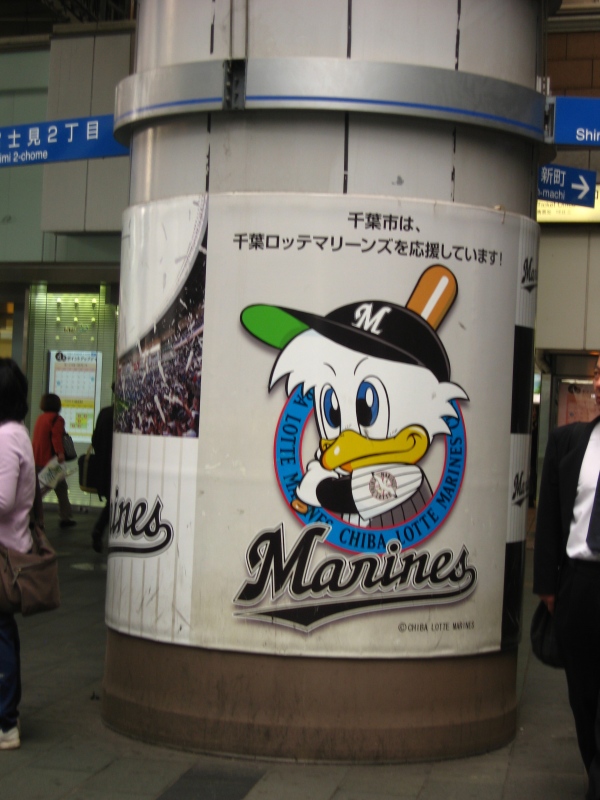
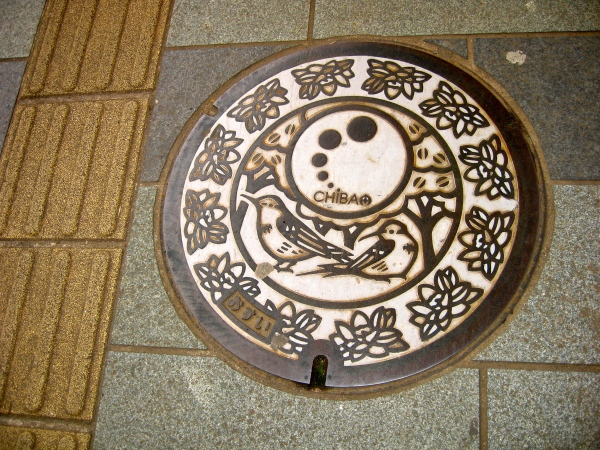

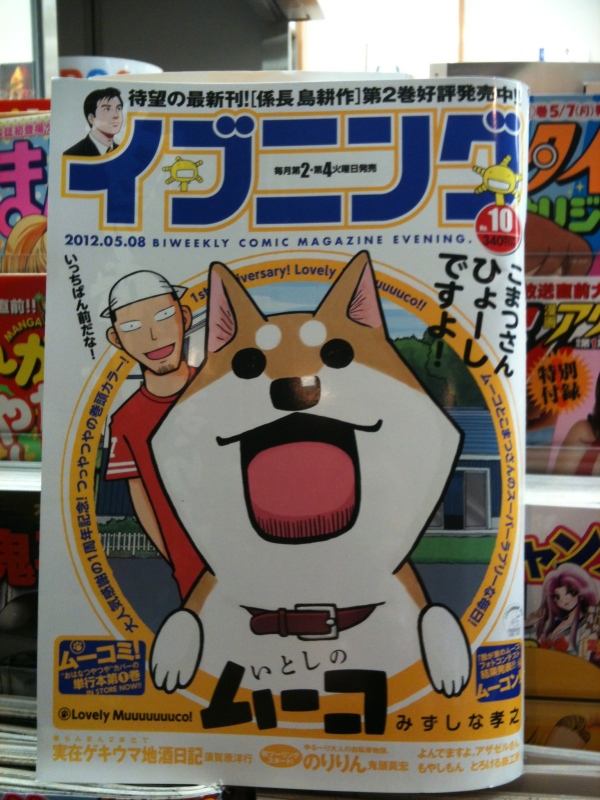
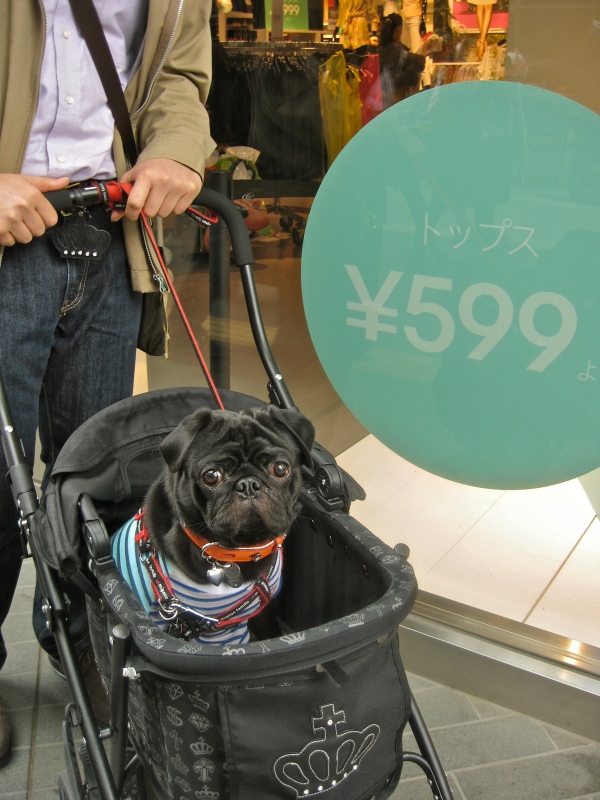

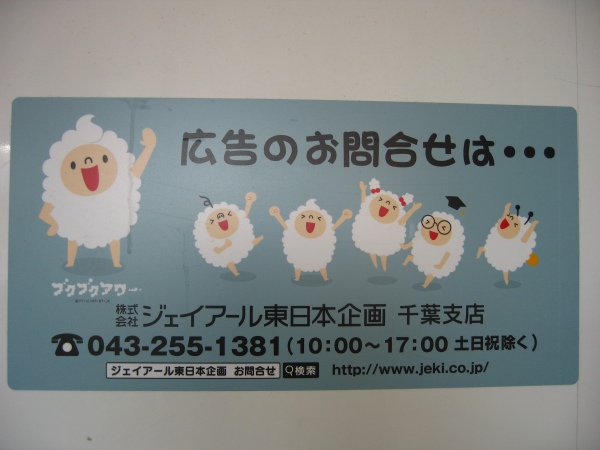
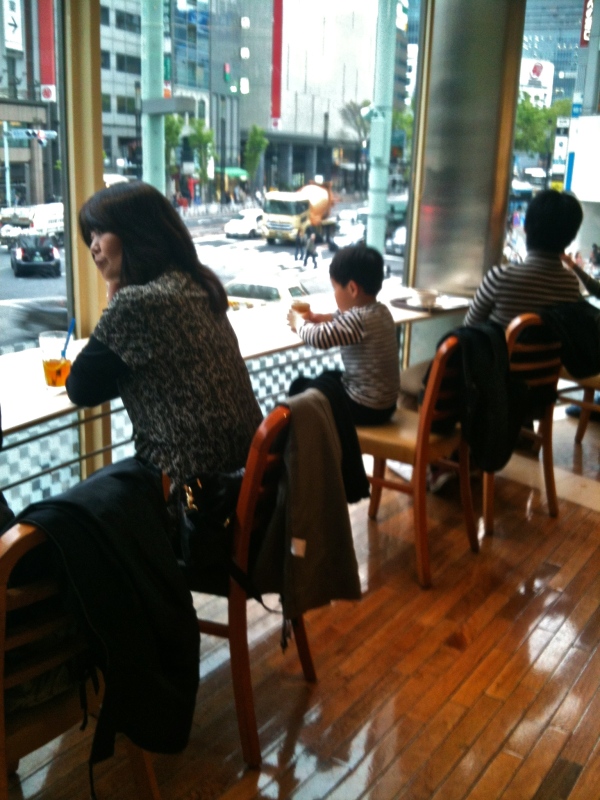


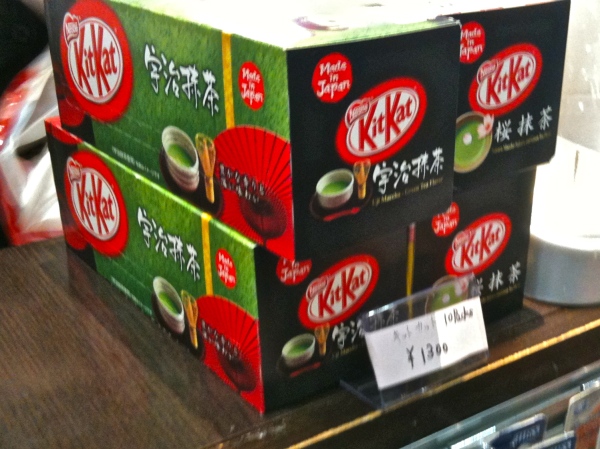

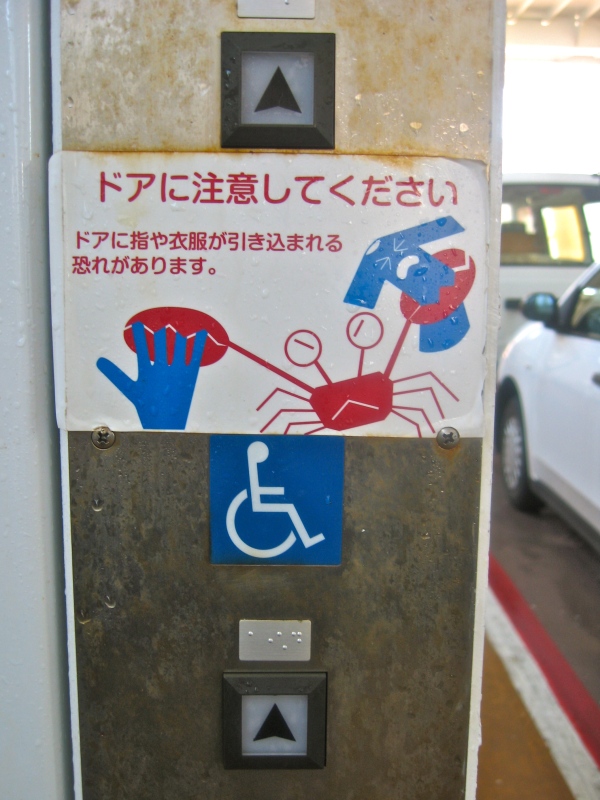
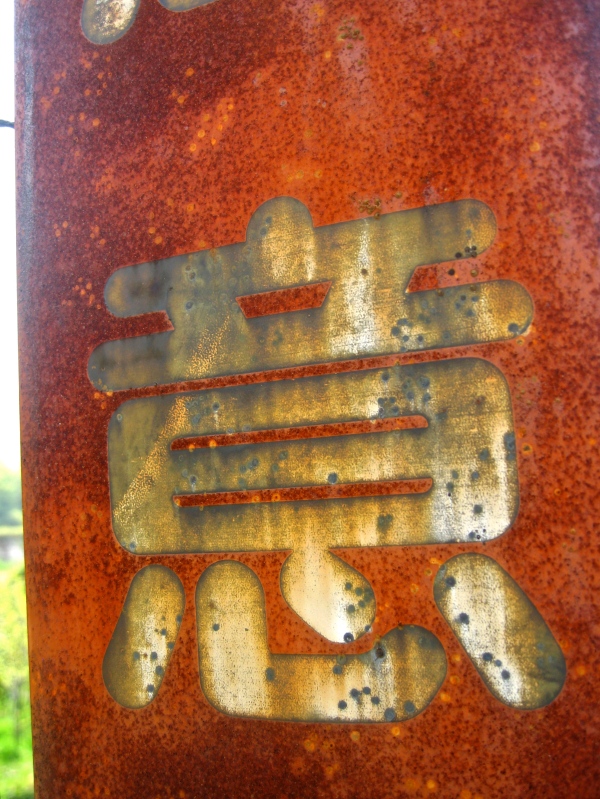
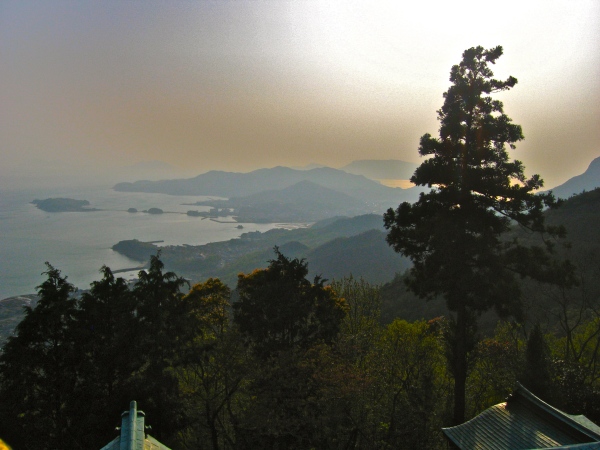
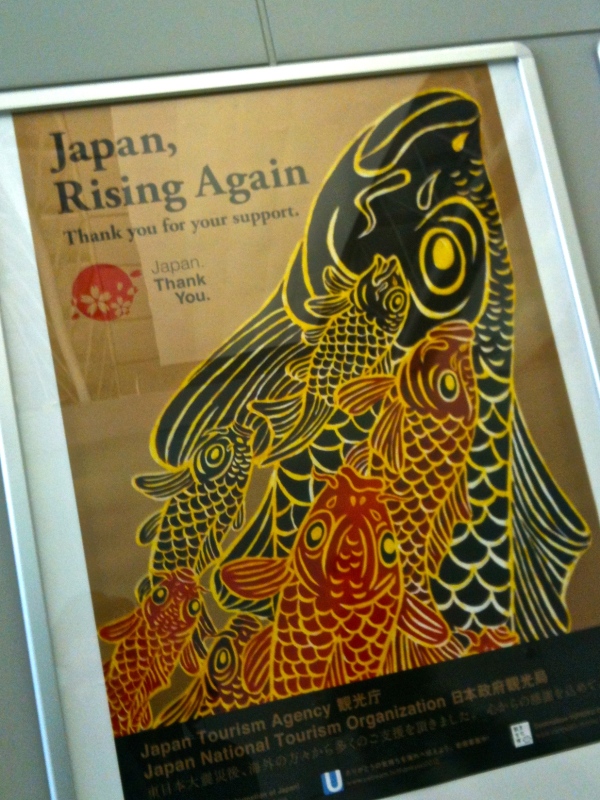









Always a pleasure to see and read your impressions from your travels. Japan has a special place in our hearts and I was thrilled to read today’s post. All the best you, my friend!
I so enjoyed seeing Japan through your eyes – thank you so much for sharing!
Thank you!
Thanks for the great entry! Interesting photos and a lot of stuff I don’t know much about. That is the greatest thing about traveling, the differences in cultures is so facinating.
Loved your commentary and photos Liz!
Thank you Liz I too loved reading your commentary….and seeing Japan through your eyes. I especially loved the man hole covers. The artistry is stunning. -Mark Cossin
Truly Fabulous….Liz. Thank you for sharing.
Great photos and musings, Liz! I am intrigued by the idea of the Shinto origins of the many anthropomorphic images in Japan… I think there is something else as well, related to cuteness. Cute rules. That is one of the reasons Miyazaki’s “Spirited Away” was so fascinating to me: in that film the anthropomorphic beings have a dark powerful side that somehow still has a foot in cute… Time to do some research.
Thanks for sharing your observations and images with us!
-Alexandra